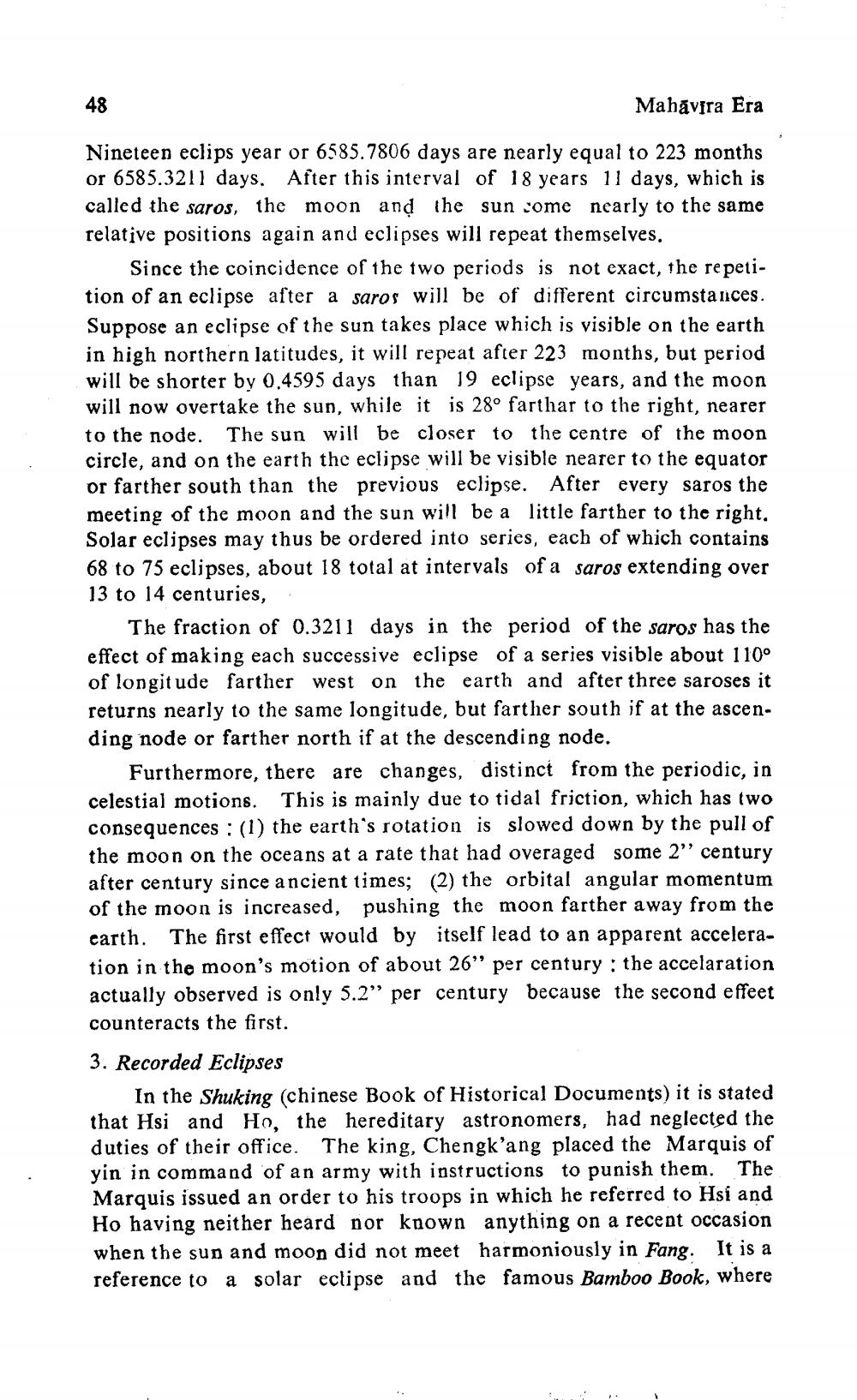________________
48
Mahavira Era
Nineteen eclips year or 6585.7806 days are nearly equal to 223 months or 6585.3211 days. After this interval of 18 years 11 days, which is called the saros, the moon and the sun come nearly to the same relative positions again and eclipses will repeat themselves.
Since the coincidence of the two periods is not exact, the repetition of an eclipse after a saros will be of different circumstances. Suppose an eclipse of the sun takes place which is visible on the earth in high northern latitudes, it will repeat after 223 months, but period will be shorter by 0.4595 days than 19 eclipse years, and the moon will now overtake the sun, while it is 28° farthar to the right, nearer to the node. The sun will be closer to the centre of the moon circle, and on the earth the eclipse will be visible nearer to the equator or farther south than the previous eclipse. After every saros the meeting of the moon and the sun will be a little farther to the right. Solar eclipses may thus be ordered into series, each of which contains 68 to 75 eclipses, about 18 total at intervals of a saros extending over 13 to 14 centuries,
The fraction of 0.3211 days in the period of the saros has the effect of making each successive eclipse of a series visible about 110° of longitude farther west on the earth and after three saroses it returns nearly to the same longitude, but farther south if at the ascending node or farther north if at the descending node.
Furthermore, there are changes, distinct from the periodic, in celestial motions. This is mainly due to tidal friction, which has two consequences: (1) the earth's rotation is slowed down by the pull of the moon on the oceans at a rate that had overaged some 2" century after century since ancient times; (2) the orbital angular momentum of the moon is increased, pushing the moon farther away from the earth. The first effect would by itself lead to an apparent acceleration in the moon's motion of about 26" per century: the accelaration actually observed is only 5.2" per century because the second effeet counteracts the first.
3. Recorded Eclipses
The
In the Shuking (chinese Book of Historical Documents) it is stated that Hsi and Ho, the hereditary astronomers, had neglected the duties of their office. The king, Chengk'ang placed the Marquis of yin in command of an army with instructions to punish them. Marquis issued an order to his troops in which he referred to Hsi and Ho having neither heard nor known anything on a recent occasion when the sun and moon did not meet harmoniously in Fang. It is a reference to a solar eclipse and the famous Bamboo Book, where




